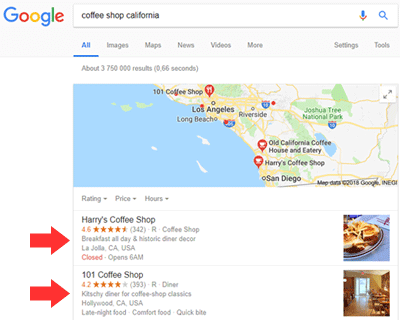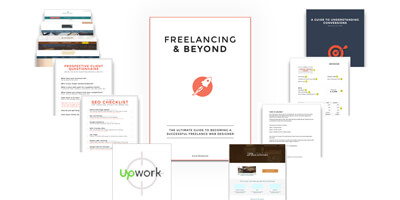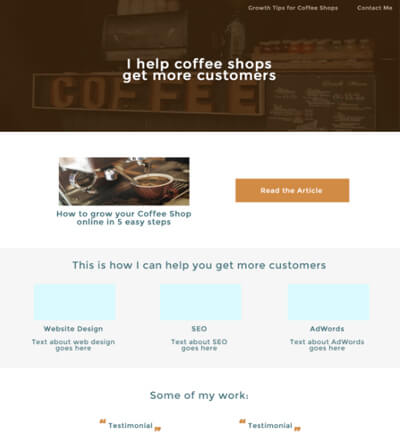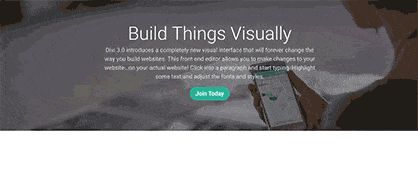How to Earn a Side Income Through Freelancing (In Your PJ's)

Most people work full-time jobs and would like to earn a side income.
Maybe you just want extra cash to go on a vacation or maybe you need it to get by each month. Either way, the steps you’ll learn in this article will help you do just that.
Today you’re going to learn how to earn a side income through freelancing (in your PJ’s).
Here Are 5 Steps to Earn a Side Income:
- Figure out what service you can offer.
- Determine your ideal clients and target market.
- Create a targeted website outlining your services.
- Reach out to your ideal clients using online marketing and outreach.
- Analyse, learn and adapt your approach to keep improving.
Step 1: Figure Out What Service You Can Offer to Generate a Side Income

Some examples may be:
- Frontend Development
- Backend Development
- Digital Marketing
- Content Writing
- Design
Don’t worry about being an “expert” at a certain skill.
The only way to improve is to DO IT and make improvements along the way, but you need to get started and believe that what you have to offer can help businesses.
You can't keep waiting until you are a "pro" otherwise you'll never get started.
I’ll mainly be focusing on Frontend Development and Digital Marketing as services, however you can apply these principles for other services as well.
Step 2: Determine Your Ideal Clients and Target Market

Without clients, you wouldn’t have a freelancing business.
The only question is, how do you get clients?
You don’t just want “clients,” but what you really want is the “right clients.”
Your Client and Niche
Finding your ideal client will help you lay the foundation for what niche you will be targeting and you can then align your marketing efforts accordingly.
Some client examples may include:
- Florists
- Bakeries
- Coffee Shops
- Health Shops
- Fitness Trainers
- Pilates Instructors
- Beauty/Hair Salons
- Printing Businesses
- Small Local Businesses in [Your Area]
(Note that the business needs to be independently owned – not franchise businesses)
Once you’ve decided on your niche/client, you need to buy a domain related to the niche you choose and create a website like the portfolio template shown in step 3.
Step 3: Create a Targeted Website Outlining Your Services

The next step involves a portfolio site that you need to create. Refer to this portfolio template as a guideline:
Click to enlarge image
Can you notice that this looks different to most other ‘portfolio’ sites?
This portfolio site is different to others which focus on primarily getting a full-time job that highlights your skills. In this example, it focuses on getting clients and how you can help their business.
The best way to think of the Portfolio Template is like a ‘Mini-niche Agency Website.’
It showcases your knowledge, expertise and how you can grow the business in the niche that you are targeting.
With the theory out of the way, let’s get into the actionable parts.
Create Blog Articles
Blog articles are important because it benefits you and it benefits the potential client.
It benefits you because the client will trust your expertise more and this will encourage them to work with you.
It benefits the client because they can learn something about how to grow their business.
You only need to have 2-3 articles to start with before you start approaching clients.
You can add an additional article once every month to make it seem like your freelancing business is still active and it will add more credibility.
Here are 3 article ideas:
- 5 Ways to Grow Your [insert niche] Online
- Why Every [insert niche] Needs A Website
- What Almost Every [insert niche] Does Wrong
How do you write the articles?
You can either outsource it to writers on Fiverr.com or write it yourself. I would recommend writing the first few articles yourself as it will help your confidence in selling to prospective clients.
Get Client Testimonials
Anyone who has tried to sell websites previously will know that one of the first things clients respond with is:
“Can you show me previous work you’ve done for [insert niche]?”
You know you can create a good website, but the client wants to see proof – which is fair after all.
Just like you’d research reviews on almost any product you’d buy online, it’s no different to the psychology of prospective clients.
How do you get around this? What’s the solution?
Well, I have two solutions that ALWAYS work in any niche I am in, but you might not like it.
Solution 1: Do two projects for free in exchange for a testimonial.
Solution 2: Buy two domains and create the websites (you just don’t get testimonials of course).
Solution #1 Requires Two Steps:
Step 1: You need to email the business owner of the niche that you’ve chosen. If they don’t reply to your email, then phone them.
How do you get their email?
Look in local website directories, yellow pages, local magazines or do Google searches until you find it.
Send them this email:
Hi [name],
I recently came across your [niche] business and I noticed you don't have a website.
I am a web designer and I would love to create your website for FREE (no catches or hidden fees) in exchange for a testimonial from you that I can use on my website.
I'm looking to get a few testimonials as it will help me in the future.
Would you be willing to take me up on this offer?
If you have any questions, please feel free to contact me.
Regards,
Your Name
Your Contact Number
Step 2: Create the website.
You can either do this quickly by purchasing a cheap template on Themeforest.net or TemplateMonster.com (often for under $20) or you can code it yourself – whichever you feel more comfortable with.
Another option is to use Divi which allows you to create WordPress websites with ease. I use it for every WP website I create.
Solution #2 Requires More Explanation:
What is the purpose of a prospective client asking to see your work?
All they want to know is if you can deliver quality work.
Think about it…
If this is all they are concerned about, why can’t you just buy the domain, create a website and add it to your Portfolio?
It’s a different story if they are asking for case studies on how you’ve helped businesses increase sales, but that is not an issue for this income strategy as you are dealing with the ‘small fish’ here.
You don’t have to tell them you actually own the website either.
Remember, all they want to see is previous experience. Owning the site is something irrelevant and not a priority for them. All they want to see is if you can deliver quality work.
I’ve honestly never had any issues with this strategy whatsoever. It’s a secret weapon that works every time!
Price Your Services
Pricing is vital to your success.
Overprice and that means you won’t get any clients. Charge too little and you might get clients who question your credibility or you may be overworked with small profits.
Pricing is relative to the niche you are serving.
For example, if you created a website for a small local florist vs a 100+ employee accounting practice, your pricing should be significantly higher for the accounting practice.
So, if you charged the florist $1,500 for a website, they might say that’s too expensive for them.
Whereas if you charged the accounting practice $3,000, they might think that’s too cheap and may question your expertise.
Read my article How to Charge for a Website to find out how to price your services in more detail.
The following is an example breakdown:
My Niche: Coffee Shops
My Services: Web Design, SEO and Social Media
Pricing Once off:
$495 for a professional one-page website
$595 for a professional one-page website + SEO submissions + Google Map submission
Pricing Monthly:
$350 – Social Media Management (posting on Facebook and Instagram twice per week).
$495 – Social Media Management + SEO
You might think my pricing is low, but remember to view it in context.
The goal is not to make a good full-time income here. A side income of $1,000 - $1,500 per month is a good and realistic benchmark to aim for.
Why this pricing model?
I want to appeal to the budget of most coffee shops. Charging $1,000+ for a website might get me a few coffee shop clients, but most of them are on tight budgets and marketing is often seen as an expense and not as an investment.
This pricing model is affordable for most of them and you will get a lot more clients with this pricing structure compared to more expensive alternatives.
You are also more likely to get a few clients paying you a monthly fee which helps you earn a more predictable income each month.
For a more advanced understanding of pricing (Value vs Hourly), read this article.
What it includes:
One-Page Website
For this price, the client can’t expect a detailed website with multiple pages. It must be professional and to the point. If they want a website that is more advanced, they need to pay you more.
In this case, the website needs to have the following:
- Good images (look on Pexels.com or DepositPhotos.com or tell the client to send you professional images)
- Information about the coffee shop (history, what makes them different)
- Trading hours, location and contact details
- Any promotions/events
- Menu
Refer to Themeforest.net for some inspiration or to even buy a cheap one-pager (under $15) if you are struggling with this to get started.
SEO Submissions
We’ve all heard the word/acronym ‘SEO’ by now. In short, it’s the process of optimizing a website to rank higher on Google (or other search networks).
All you need to do is submit the website to local directories which will help the initial stages of the website ranking higher on Google.
Directories vary based on your city and country, so a simple Google search “local business directory” would give you more than enough options. You can also search for “[insert niche] directory listing”.
3 common directories are:
1. Yelp.com
2. YellowPages.com
3. FourSquare.com
Google Map Submission
We’ve all seen the Google maps on Google after doing some searches, but have you ever wondered how businesses get listed on there?

It’s a very simple process and I’m not going to explain that here as there are plenty of free online resources for this.
Local SEO is a MUST for small businesses.
If you'd like to learn more about Local SEO, take this course:
Many people search for “coffee shops near me” (or the niche you choose) and they often just click on the map options.
By having your client on the maps can be highly beneficial to getting more customers.
Social Media Management
I find Twitter is a waste of time in terms of engagement and it ultimately leads to a ‘customer care’ format when it comes to business profiles.
I generally prefer Instagram and Facebook for business profiles as the engagement is much better.
Make sure to create and adapt the social media channels depending on where your client’s target market is.
Read this guide on social media platforms to help you get started.
All you will be doing is posting on Facebook and Instagram (or others) twice every week.
The posts can be informative, funny, giveaways, promotions, helpful and asking questions.
The bottom line is that the purpose is engagement. If potential customers can see engagement and a good looking social media profile, it helps them trust the business more and they are more likely to visit and recommend it to friends.
You can get images/content from the owner, or just look on Pexels.com and then also look at what competitors post to see how you can be different.
Be smart about it and plan the posts in advance. Don’t start finding everything the day you need to post it.
It’s only 8-10 different posts a month – it’s not difficult, but it requires some thought and planning for it to run smoothly.
You can also use a tool called Grum.co to help you schedule Instagram posts in advance. Facebook has this option for free. Also look at Hootsuite which has a free plan as well.
SEO
Your goal is to get the business to rank higher on Google. I wouldn’t do advanced things here because the budget is so small.
Read this SEO article I wrote to help you understand it better.
Make sure to optimize the on-page SEO as well.
In this scenario, I would only do one 1,200-word article with some nice-looking images from Pexels.com or DepositPhotos.com.
If the articles are good, then Google will eventually rank the articles higher and that will boost the site’s long-term SEO results.
SEO is considered to be more of a long-term marketing tactic. You can start seeing good results between 3 – 12 months depending on the industry.
The bottom line is that SEO should be seen as an investment. It’s just about getting started.
Some SEO article ideas to consider:
- The 10 Best [insert niche] in [insert suburb/area]
- How to Choose the Right [insert niche]
- 5 Health Benefits of Coffee
Benefits of this overall strategy:
Once you’ve done a few websites, you’ll already have a few different website themes that you can use for new clients that sign up in the future.
All you need to do is upload images, add content, update a menu download, upload the website to the host and you’re done.
You can easily complete the whole website in 3–4 hours as long as you get the information from the client.
It’s important to remember that you are not doing a 10+ page website here.
It’s one page.
Even a simple 3-pager won’t take much longer – especially after your third client.
Don’t be disheartened by the small income amount. It’s a numbers game.
Even if you get just one client every month (the small package) + only one client signing up for the monthly package, that equals over $800 per month.
If you only get two clients per month + one client signing up for the monthly package, that's over $1,300 per month.
This can be done. It's seriously not something that is unrealistic and it doesn’t require a lot of time to keep it going.
The hard work is initially upfront with creating your site, building your portfolio and improving on some marketing things mentioned below.
Step 4: Get The Clients

What I’ve mentioned may sound all nice and fluffy, but without the clients it means nothing.
Here are the three best ways to get clients for this marketing strategy:
1. AdWords
2. Facebook Group
3. Outreach
1: AdWords
AdWords is an excellent way of getting new clients.
Briefly, AdWords are the ads that you see at the top of all Google searches.
Every time someone clicks on the ad, the business (or you) needs to pay for it.
The point of AdWords is this:
You sell a website for $495. Would you be willing to spend $50 to get a confirmed client with the potential of them signing up for a monthly marketing package?
Sure.
Would you be willing to spend $200 to get a client to buy a $495 website?
Probably not.
It’s all about figuring out what you are willing to pay in comparison with what you will earn.
Searches your ad should display for are (depending on your niche):
“Coffee shop website template“
“Coffee shop website theme“
“Web designer for small business“
“Web designer for coffee shop“
“Website design for coffee shop“
In this case, each click might cost $2 on average.
I understand that there will be many searching for these terms just out of research – maybe web designers trying to get inspiration or buy the themes themselves, but this is something that just needs to be accepted when it comes to a niche like this.
One way to combat this is to avoid your ads showing with searches including the word “ideas” or “inspiration” in the negative keywords so that it’s more relevant.
Not all searches are from a curiosity standpoint. Many are legitimate business owners just wanting to figure it out themselves, but because the pricing is so low, it’s something they will likely go ahead with compared to doing it themselves.
If you don't have any AdWords knowledge, take this excellent course on Udemy:
2: Facebook Group
So many people overlook this strategy.
All you need to do is create a Facebook Group relating to your niche and focus on getting the owners of the niche you are targeting to join the group.
In this case, I would want coffee shop owners in ‘XYZ’ city to join my Facebook group.
Then I would just add value to the group. Post awesome articles on how coffee shops can grow their business, psychology tips, productivity tips, funny memes, etc.
The next step would be to message each member directly or post occasionally to the group about how you can help them grow their business.
You don’t need 1,000 members here. 50 members are excellent. Remember, it’s super niche and these are the exact clients you’d like to work with.
It usually takes up to 3 months to get your first client from this marketing channel, but then you’ll notice improvements after this.
Just focus on converting 10% into paying clients and then focus on growing the group from there.
More targeted members = More clients in the long-run.
It’s an excellent way of gaining new clients and it helps position you as an authority in your niche.
3: The Manual Work
There’s no shortcut on this part. It requires some research and work.
You need to do the following:
1. Look at Yellow Pages
2. Look at local online business directories
3. Look at local print media (newspapers, pamphlets, flyers)
4. Look on Google for coffee shops
In each of these examples, you need to find out the following:
1. Do they have a website? If not, carry on with the next step.
2. Do they show up on Google for their coffee shop?
If the answer is no to both questions, that’s good news. Now it’s time for you to sell your services.
Before I go further, you need to be aware that you can’t be sensitive when it comes to this.
You must mentally prepare for over 90% of your outreach being completely ignored or you might receive a straight “NOT interested” reply.
This doesn’t mean you shouldn’t still go ahead with it, but I don’t want to paint a fairy-tale picture here because it doesn’t work out like that.
Many of you will face a mental barrier because I said the word “sell.”
I also faced this barrier, but then I came to this realization:
I am providing the coffee shop (or business niche you decide) with an effective marketing tool that will help them appear more professional and it will lead to more customers.
I’m HELPING their business grow and they are just paying me to do so.
It’s an exchange of value for value.
Once you understand that it’s in their best interests to partner with you, everything will fall into perspective and you will feel way more confident to “sell.”
The next step would be to find their email and/or contact number from the media mentioned earlier.
Send them this email:
Subject Line: [Business Niche Company Name] Website
Hi [name or company name],
My name is [insert name] and I am a web designer based in [insert city].
I came across your [insert niche] business in the [insert media] and noticed you don’t have a website yet.
I have experience in working with [insert niche] businesses to help them create effective websites for only $495 (with no hidden fees).
Would you be interested in discussing this further?
We can set up a call or I'd be happy to discuss this via email.
For more information about my expertise, here is my website: [www.mynichewebsite.com]
Thank you and I look forward hearing from you.
Regards,
[your name]
If you don’t receive a reply after 3 days, send them this email:
Subject Line: RE: [Business Niche Company Name] Website
Hi [name or company name],
I'd just like to confirm if you received my email I sent a few days ago?
Regards,
[your name]
If you don’t get a reply 2 days after your follow up, phone them.
Sometimes prospective clients genuinely consider your proposal but they are too busy and forget to reply.
The follow up often receives more responses than the first email as it often seems spammy.
Businesses receive emails from companies wanting to design their website and do SEO services almost daily, so to them, you are much like the rest.
The approach I mentioned above is if the business doesn’t have a website, but what if they already have a website?
After you’ve got a few projects to your name, you should approach coffee shops that have existing websites but that are poorly designed.
Just some [insert niche] Google searches will pick up all you need to start.
Once you feel more confident about easily pointing out the errors and giving some valid recommendations, email them this message:
Hi [name or company name],
My name is [insert name], I recently came across your website after searching for [the search term you used].
I noticed that your website doesn’t display the important aspects that a [insert niche] website should display, such as:
· Clear contact details
· Clear company history
· Professional images and content
· Social media profiles
· Clear location and trading hours’ information
· Menu and specials
Making these changes will help your [insert niche] appear to be more professional and you will gain more trust with potential customers.
I'd love to set up a call to discuss how I can help you get more customers through effective web design changes.
If you have any questions, feel free to contact me.
For more information about my expertise, here is my website: [www.mynichewebsite.com]
Thank you and I look forward to hearing from you.
Regards,
[your name]
Step 5: Analyse, Learn and Adapt

After 3 months of actively applying these strategies, it’s important to see where you can make improvements.
By this point, you’ll get an idea of how clients respond and then you can adapt your emails and marketing accordingly.
The truth is that it requires a lot of hard work, but it’s important to be smart about it.
These strategies work and if you are willing to stick it out and improve along the way, it’s only a matter of time before you reach your goals.
I hope this has helped you on your journey in creating a side income.
If you'd like to learn more advanced strategies, check out my popular freelancing bundle.

Share this article if you found it helpful and let me know :)
 by Kyle Prinsloo Last updated Feb. 27, 2018
by Kyle Prinsloo Last updated Feb. 27, 2018









